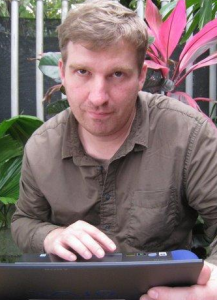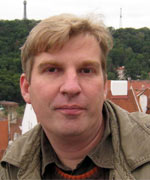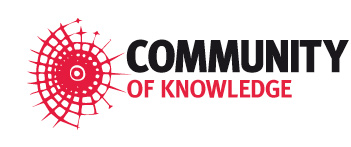Beiträge
Themengruppen
Recherche
Service
- Was ist Wissensmangement?
- Open Journal of Knowledge Management
- Artikel-Guidelines
- Newsletter
- Kalender
- Wissensmanagement-Anbieter
- Partner
- Mediadaten
Community
Sponsoren


The hype, the hope and the LOD2: Sören Auer engaged in the next generation LOD
Dr. Auer was interviewed by the Semantic Web Company
16. Juni 2011 von Dr. Sören Auer, Thomas ThurnerThe paneuropean Project LOD2 (Linking Open Data) is one of the biggest projects dealing with linked data. Scientists, programmers and software architects in various european countries are working on the next generation of linked open data. In a series of interviews Thomas Thruner of the Semantic Web Company (SWC) is presenting people working on and with LOD2. As a start SWC talked to Sören Auer, head of the LOD2 project.
 Thomas Thurner: Over the recent years the LOD movement gained tremendous momentum. As one of the key players in this area how do you perceive this development? Hype or hope?
Thomas Thurner: Over the recent years the LOD movement gained tremendous momentum. As one of the key players in this area how do you perceive this development? Hype or hope?
Sören Auer: From my point of view the momentum LOD gained is deserved. We should strive for a Web, which is more decentralized, democratic, participatory, transparent and inclusive. Linked Open Data is from my point a key technological building block on this road. However, a lot of work is ahead of us. LOD has to find its way directly into mainstream technology such as CMSes, Search Engines, Web Applications, Mash-Ups and we have to show users and stakeholders the direct added-value of this technology.
Thomas Thurner: What is the current state of the LOD cloud from a technological point of view? Where do you see room for improvement?
Sören Auer: Currently, the technological state of LOD seems to be comparable to the early days of the Web. We are still able to draw maps/clouds of the LOD datasets and data links are still sparse and difficult to maintain. This reminds me a lot of the early days of the Web, where we also had problems with broken links (the infamous 404). Later, after content management systems and Web applications automatized the link generation and maintenance this improved a lot and I hope we are on the same road with LOD technologies finding its way into more and more Web systems.
Thomas Thurner: How is the LOD2 project addressing theses issues? What are the project’s key objectives?
Sören Auer: LOD2 is addressing in three ways: First, we develop new research approaches highly relevant for LOD, for example, for Linked Data management, automatic data linking as well as Linked Data enrichment andquality improvement. Second, we implement and integrate these approaches into specialized tools (e.g. SILK, OntoWiki, Virtuoso and DL-Learner) forming together the integrated LOD2 stack. The LOD2 stack can be used by data publishers for the whole life-cycle of Linked Data management ranging from extraction over linking, authoring, enrichment to exploration & search.
Thomas Thurner: What do you think are the most important factors to bring LOD to the masses?
Sören Auer: From my point of view the key factor here is that we manage to integrate the large number of tools and approaches for supporting the Linked Datalife-cycle stages in a synergistic way, where each aspect adds value and triggers a number of other improvements. For example, the establishing of a new data link has a direct effect on search & exploration of Linked Data. We have to directly show these kind of benefits to users so they receive and instant gratification for contributions to the Web of Data. Semantic Wikis, such as Semantic MediaWiki and OntoWiki, are already nicely working in this direction. An application with an enormous potential to bring LOD to the masses would be the creation of a distributed, social semantic network. With OpenId, WebId, FOAF, Semantic Pingback most of the building blocks are available, but the final step integrating these into an easy-to-use social networking application still has to be done.
Thomas Thurner: Compared to other semantic web approaches linked data principles seem to be rather easy to understand. On the other hand some argue that the “linked data cloud” is a big heap of data which cannot be used for professional purposes. What is your point of view?
Sören Auer: Of course the currently available data is not useful for all potential usage scenarios. However, already now Linked Data can be used for many interesting applications: For example, we just completed the development of a prototype for a large search engine, where users searching are assisted with comprehensive background information obtained from the Linked Data Web. For this use case, information available as Linked Data is already very valuable and useful. The criticism of LOD being a “heap of data” also reminds me a lot of the early days of the Web, where people raised similar criticisms for the Web being a medium of un-professionalism. Later it turned out that, of course there is a lot of amateurism, but as Wikipedia impressively demonstrates the working together of many amateurs with the right tools can in the end outperform few professionals.
Thomas Thurner: Linked Data could also become a new paradigm for light-weight enterprise data integration. What are the biggest obstacles today for linked data to being accepted by the business community?
Sören Auer: Using Linked Data for data integration in large enterprises has an enormous potential. Just last week I was invited for a workshop with the IT department of one of the top car makers and the people responsible there for data integration were extremely excited about the opportunities of Linked Data in the large heterogeneous enterprise with more than 3000 different backend systems. Linked Data technologies can easily fill the gap between unstructured Intranet search and expensive & complicated Service-oriented Architectures. Compared to SOA, Linked Data is a pay-as-you-go strategy, where data integration can be performed incementally and in sync with the requirements and evolution of the data structures in the enterprise. In order to realize this vision, we need to continue the maturation of enterprise Linked Data tools – the availability of PoolParty, Sindice Enterprise Edition, Virtuoso, TopBraid are already important steps in that direction.
Thomas Thurner: Automatic mechanisms to curate linked data and to make alignments between datasets possible play a crucial role for the next phase of linked data economics. Which technologies will play a central role? What will be the most critical point – do you see a “wisdom of the crowd” playing a role in this game?
 Sören Auer: Definitely! Tapping the wisdom of the crowd for mapping & linking has a huge potential, which is currently unused. We started working in that direction with DBpedia Live and the DBpedia mapping Wiki. In order, to make it really easy for people to contribute we have to dramatically lower the barrier to contributing to the alignment process. In LOD2 we also plan to enable users to create mapping and links between dataset by simply giving examples of correct links and evaluating some automatically generated ones.
Sören Auer: Definitely! Tapping the wisdom of the crowd for mapping & linking has a huge potential, which is currently unused. We started working in that direction with DBpedia Live and the DBpedia mapping Wiki. In order, to make it really easy for people to contribute we have to dramatically lower the barrier to contributing to the alignment process. In LOD2 we also plan to enable users to create mapping and links between dataset by simply giving examples of correct links and evaluating some automatically generated ones.
Thomas Thurner: At the moment governments all around the world start to publish open data, more and more stakeholders start to understand the benefit of open linked data. On the other hand enterprises haven´t even started with this topic. What could be the dynamics which will trigger projects in industry sectors like financial industries which will make use of open data principles?
Sören Auer: Making statistical and financial information available in structured form and as Linked Data could have a enormous impact in this regard. With the DataCube vocabulary effort a first step in this direction was made, but it would be nice if this vocabulary would get an official stamp of a standardization organization such as W3C. Since the benefit of publishing statistical and financial data in structured form, e.g. as Linked Data, is visible most when done by many, this could be also facilitated by government regulations and industry best-practices.
Kommentare
Das Kommentarsystem ist zurzeit deaktiviert.
Schlagworte
Dieser Beitrag ist den folgenden Schlagworten zugeordnet

